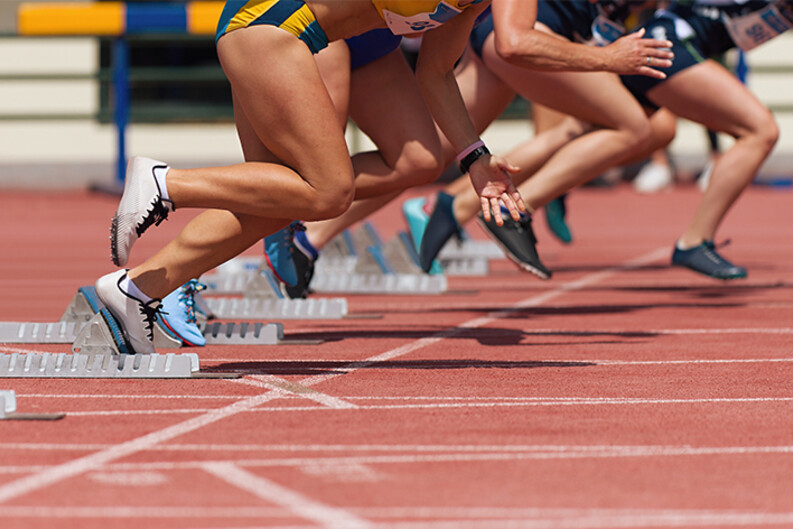Report Seeks to Prevent Interpersonal Violence in Elite Sports

The Sports Equity™ Lab (SEL), with the Global Health Justice Partnership (GHJP) of Yale Law School and the Yale School of Public Health, the Orville H. Schell, Jr. Center for International Human Rights at Yale Law School, and Sports Law Solutions, published a report on June 20 analyzing the issue of interpersonal violence in international sport. The report, Policy and Legal Frameworks for Preventing Interpersonal Violence in Elite Sport4, issues a challenge, in its framework, analysis and research, to the world of sport to take effective steps to stop interpersonal violence in elite sport.
As the 2024 Summer Olympics and Paralympics in Paris approach, the power of the athletes will be in everyone’s sights. “We call for all who enjoy sport to look ‘beyond the flame’ and celebrate a more comprehensive understanding of sporting excellence, including a commitment to meaningful change within the structures that make athletes’ glory — and their abuse — possible,” said Yetsa A. Tuakli-Wosornu, Sports Equity™ Lab director and one of the primary authors of the report.
The report brings together research, analysis, and workshop discussions and includes the voices of athletes, academics, lawyers, advocates, activists, medical doctors, and officers from a range of sporting bodies. The report explores the range of abusive practices directed against elite athletes and asks hard questions about the systemic failure to prevent, respond to, and reform the policies across the interconnected institutions that give rise to them.
“Unlike many previous interventions, this report focuses not on one bad actor or one single site to fix. Instead, we explore the historical legacies of key institutions and the present conditions that give rise to abuse,” noted co-author Alice M. Miller, Co-Director of the Global Health Justice Partnership.
Seeking athlete-driven sports governance
The report has three parts. The first part explains the unique culture of elite sport that facilitates abuse, including the imprint of colonial regimes on modern sports, now exacerbated by the marketization of sports, that set the context for sport. The first part of the report also analyzes the internal customs and regimes of sport that combine to enable abuse and the hierarchical power structures of decision-making that place athletes at the bottom.
The second part of the report discusses the many failures of current safeguarding measures, including policies that put pressure on individual athletes to come forward alone, a step especially difficult when embedded in the strict hierarchies of sport. This part flags existing safeguarding policies’ lack of mechanisms for meaningful accountability and their failure to account for different sporting cultures.
The third part of the report looks to the future and, especially, athlete leadership. Major attitudinal and cultural shifts in sport are needed, the report argues, to interrupt the legacies of gender and racial stereotypes, as well as beliefs about disability and age that create the conditions for harm. The report further argues that advocates can use the tools of law and rights to focus on the systems and structures of sport. Moreover, in order to ensure effective prevention, protection and accountability, these rights-based policies must integrate data-driven trauma care as a core component.
Finally, the report highlights the tension arising between taking seriously sport’s claims to independence from government interference, which has given rise to its system of private self-regulation, including mandatory arbitration, and the need for oversight by public entities, including national and global courts whose mandates include human rights protection. The report calls for an athlete-centered, athlete-driven version of sports governance that is committed to international human rights standards. The report lays out the elements of an effective sports governance that prioritizes the mental, emotional, physical, and social health and safety of athletes.
Practices of punishment, reward, and abuse
An important and unique part of the report is its linking of interventions to prevent and redress interpersonal abuse to conditions that enable abuse — including the structures and policies that privilege or deny privileges to persons contingent on their gender, race, ability, and their place of origin.
“Sports’ informal inclusion and exclusion rules operate alongside formal rules that take distinct shapes across the globe and play out in different ways across distinct social, political, and cultural environments,” said Miller. “However, these kinds of informal rules are always operating. Our report investigates the ways that the informal rules outside of sport, which rank and value people differently, continue into sport: Ideas and practices about how to treat people or whose suffering matters often follow stereotypes about gender, age, race and disability—factors that intersect in athletes lives.”
Tuakli-Wosornu added, “These ideas and values, our report shows, become quiet but powerful regulatory systems in the hands of coaches, team doctors, other athletes and even family members. These systems operate to distribute power and, with it, practices of punishment, reward, and abuse over athletes. Often these policies are cloaked as promoting winning, but they serve to shield harassment and abuse from condemnation or intervention.”
“Although the report focuses on elite sport, we hope it will have more expansive effects, especially in light of the leadership role elite sport plays in establishing and altering sport ideals,” continued Miller, “and, more practically, because of the way elite-sport practices trickle down to more recreational and school-based sport.”
As Tuakli-Wosornu states, “We hope this report clears a path to move ideas into action, in support of and with full respect for the voices of today’s global athletes, whose courageous actions have already begun to transform elite sport regulatory bodies.” Athletes, the report observes, are not blind to sport’s complexities and tensions. The report makes clear that athletes will be the source of solutions and that transformation has moved away from coercive power structures that commodify and dehumanize athletes towards power-balanced, accountable models that center not only high performance in sport but also compassion and humanism. As Tuakli-Wosornu notes, “Amplifying participants’ perspectives is the strongest starting point to equitably addressing sport’s densely knotted web of interests and powers.”
Jim Silk ’89, Co-Director of the Schell Center for International Human Rights, concluded, “We hope this report can spur exciting efforts and collaborations that will help establish a new analytical approach and concrete action. These efforts can accomplish that only if they draw on nontraditional sources, within and outside of sport, for wisdom. We believe that this change is necessary for developing full and genuine understanding of the forms and devastating effects of interpersonal violence on diverse athletes.“
“We are not proposing a simple fix,” Silk added. “The intertwined structures that give rise to these harms would overwhelm such an effort. We are calling for awareness that effective steps to prevent and remedy abuse will have to reckon with these structures, not cover up their flaws.”


